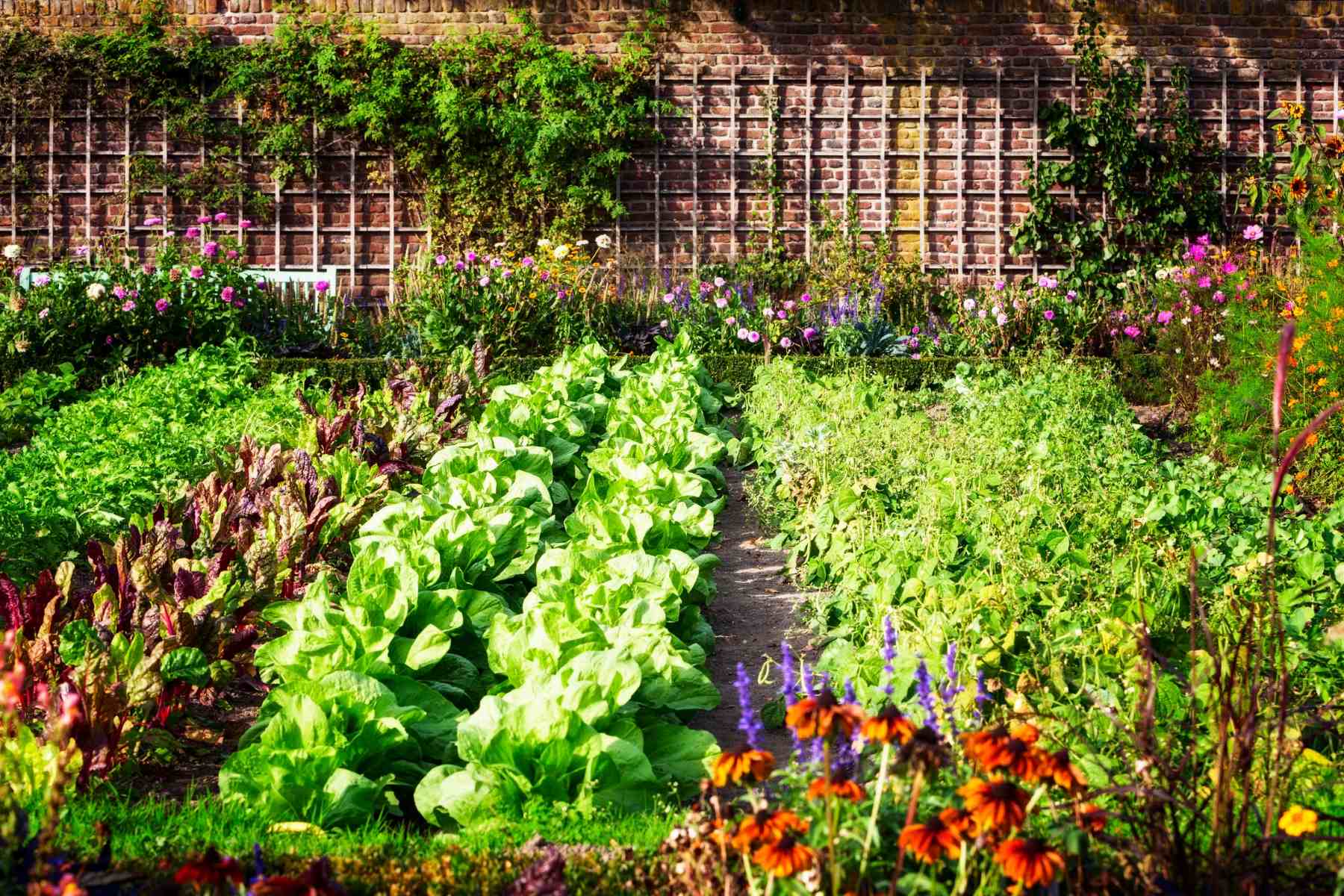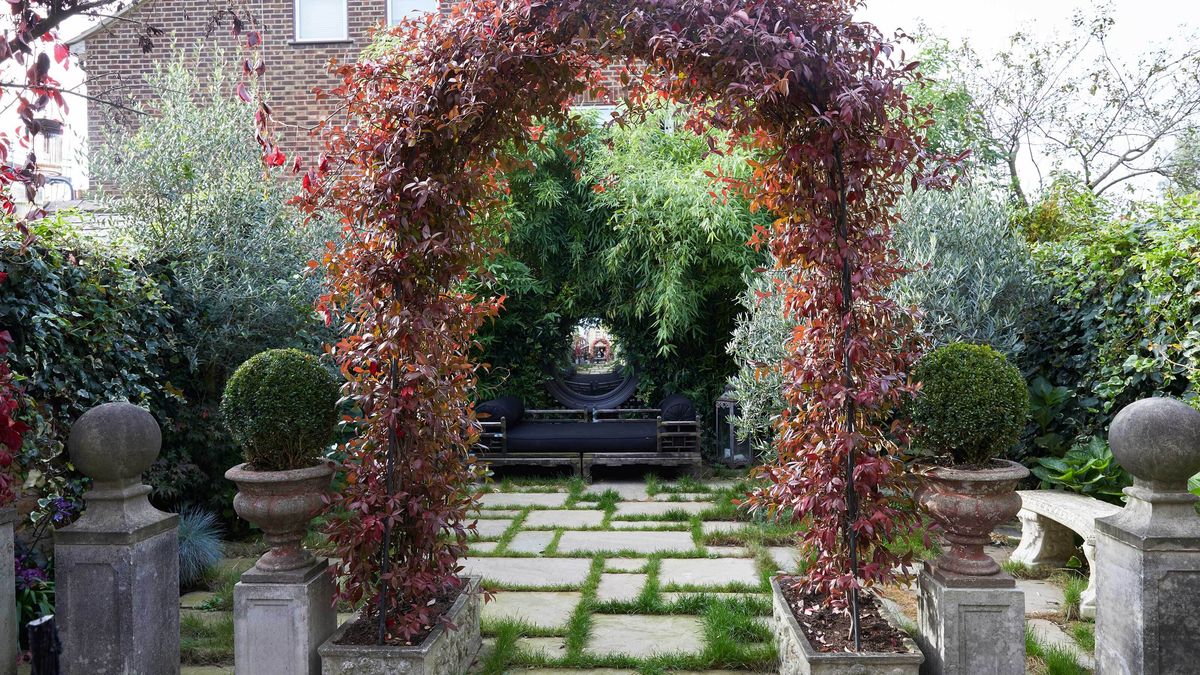Home>Ideas and Tips>Backyard Grape Arbor Construction: Edible Landscape Feature


Ideas and Tips
Backyard Grape Arbor Construction: Edible Landscape Feature
Published: September 3, 2024
Learn how to build a stunning backyard grape arbor that adds elegance and functionality to your garden while providing fresh, delicious grapes.
(Many of the links in this article redirect to a specific reviewed product. Your purchase of these products through affiliate links helps to generate commission for Storables.com, at no extra cost. Learn more)
Creating a backyard grape arbor is an excellent way to enhance your outdoor space while growing your own grapes. This DIY project not only adds a majestic presence to your garden but also provides a functional trellis for the grapes to grow on. In this article, we will guide you through the process of building a grape arbor, from planning and materials to construction and maintenance.
Why Build a Grape Arbor?
Building a grape arbor has been a dream for many gardeners and homeowners. Here are some compelling reasons to consider this project:
- Aesthetic Appeal: A grape arbor adds a touch of elegance and charm to your backyard. It can serve as a focal point, drawing attention to your garden and creating a sense of grandeur.
- Functional Use: The primary purpose of a grape arbor is to provide support for grape vines, allowing them to grow upwards and produce fruit.
- Edible Landscape: Growing your own grapes means you have access to fresh, delicious fruit right in your own yard. You can enjoy them fresh, process them into juice, jelly, or wine, or simply have the fruit on the vine for the delight of children and adults.
- Family Project: Building a grape arbor can be a family project, involving multiple members in its construction, planting, pruning, and harvesting. This helps each member learn more about gardening and the environment.
- Year-Round Interest: A grape arbor provides year-round interest, with the vines going through four seasonal cycles: emerging from rest in the spring, growing rapidly in the summer, fruiting in the fall, and becoming dormant in the winter.
Planning Your Grape Arbor
Before you start building your grape arbor, it's essential to plan carefully. Here are some steps to consider:
-
Choose the Right Location:
- Select a spot that receives full sun to partial shade. Grapes need direct sunlight to ripen properly.
- Ensure the area is well-drained and has good air circulation to prevent disease.
-
Select the Right Materials:
- Posts: Typically 4×4 or 6×6 posts are used for the corners of the arbor. You can also use metal beams or charred wood for added durability.
- Beams: 4×6 or 6×6 beams are ideal for the horizontal supports.
- Runner: Use 2x4s for the runner that will support the grape vines.
- Lattice Boards: Optional but recommended for young grape plants to climb onto.
-
Design Your Arbor:
- Decide on the dimensions of your arbor based on the space available and the type of grape vines you plan to use. A standard arbor can be established in an 8×8 foot area.
- Consider adding a porch swing or hammock for a relaxing seating area.
Materials Needed
Here is a detailed shopping list for building a backyard grape arbor:
- Posts: 4-6 posts (depending on the size of your arbor) – 4×4 or 6×6 inches, 7-8 feet tall.
- Beams: 2-4 beams – 4×6 or 6×6 inches, 12 feet long.
- Runner: 10-12 pieces of 2×4 lumber, 5-6 feet long.
- Braces: Several pieces of 2×4 lumber for bracing the structure.
- Lattice Boards: Optional but recommended for young grape plants to climb onto.
- Deck Screws: 1 box of 2-inch deck screws and 1 box of 4-inch deck screws.
- Concrete Mix: For setting the posts in concrete piers.
Building Your Grape Arbor
Building a grape arbor is a DIY project that can be completed in a weekend with some planning and effort. Here’s a step-by-step guide:
-
Prepare the Site:
- Clear the area where you plan to build your arbor. Remove any debris and level the ground.
-
Set the Posts:
- Dig holes for the posts, about 12 inches deep and slightly wider than the posts.
- Mix concrete and pour it into the holes. Place the posts in the holes and secure them with concrete.
-
Assemble the Frame:
- Cut the beams to size and attach them to the posts using deck screws.
- Ensure the frame is sturdy and level.
-
Add Bracing:
- Cut additional 2×4 lumber for bracing the structure.
- Attach these bracing pieces between the beams to add stability.
-
Install Lattice Boards (Optional):
- Cut lattice boards to size and attach them to each side of the arbor using deck screws.
- This will provide a surface for young grape plants to climb onto.
-
Add Runner:
- Cut 2×4 lumber to size and attach it across the top of the arbor.
- Bevel the ends of these pieces at a 45-degree angle for a decorative look.
-
Finish Touches:
- Install solar lights or string lights around the arbor for a romantic ambiance.
- Add a porch swing or hammock for a relaxing seating area.
Planting Grape Vines
Once your arbor is built, it's time to plant your grape vines:
-
Choose Healthy Vines:
- Select healthy grape vines from a nursery or store.
- Ensure they are suitable for your climate and region.
-
Plant Vines:
- Dig holes for each vine, about 12 inches deep and slightly wider than the root ball.
- Plant the vines in the holes, making sure the graft union (if applicable) is above ground level.
- Water thoroughly after planting.
-
Prune Vines:
- Prune back the vines to two buds at planting time.
- During the second and third year, allow one trunk to develop while pruning off all side canes.
-
Train Vines:
- Select the strongest cane and train it up the arbor post.
- Tip all side canes to simulate the trunk.
Read more: The Forbidden Fruit Of Edible Landscaping
Maintenance Tips
Maintaining your grape arbor is crucial for its longevity and productivity:
-
Regular Pruning:
- Prune vines annually in February or March for maintained arbors.
- Prune muscadines in November or December to reduce bleeding.
-
Pest Control:
- Regularly inspect your vines for pests like aphids, spider mites, and powdery mildew.
- Use organic pest control methods whenever possible.
-
Fertilization:
- Fertilize your grape vines annually with a balanced fertilizer during the growing season.
-
Mulching:
- Mulch around the base of the vines to retain moisture and suppress weeds.
Varieties of Grape Vines
There are several varieties of grape vines that are well-suited for different climates and regions:
- Black Spanish: Adapted to all of Texas, this variety is known for its robust flavor and high yield.
- Champanel: Another variety adapted to Texas, it is known for its disease resistance and high yield.
- Muscadines: Adapted to East Texas and the Gulf Coast, muscadines are known for their sweet flavor and thick skin.
Common Issues and Solutions
Here are some common issues you might encounter when building and maintaining a grape arbor along with their solutions:
-
Vines Not Getting Enough Sun:
- Solution: Use a wire trellis system where vines can spread out and receive more sun.
-
Vines Getting Too Thick:
- Solution: Prune vines regularly to maintain a balanced structure and ensure grapes receive enough sunlight.
-
Structural Integrity:
- Solution: Use durable materials like metal beams or charred wood for added stability.
-
Pest Infestation:
- Solution: Regularly inspect vines for pests and use organic pest control methods whenever possible.
Conclusion
Building a backyard grape arbor is a rewarding DIY project that adds both aesthetic appeal and functional use to your outdoor space. With careful planning, the right materials, and regular maintenance, you can enjoy fresh grapes from your very own vines. Whether you're looking to create an edible landscape feature or simply enhance your garden's beauty, a grape arbor is an excellent choice.
By following these steps and tips outlined in this article, you'll be well on your way to creating a stunning and productive grape arbor in your backyard. Happy building
Was this page helpful?
At Storables.com, we guarantee accurate and reliable information. Our content, validated by Expert Board Contributors, is crafted following stringent Editorial Policies. We're committed to providing you with well-researched, expert-backed insights for all your informational needs.















0 thoughts on “Backyard Grape Arbor Construction: Edible Landscape Feature”